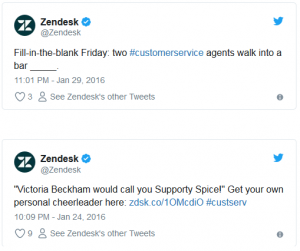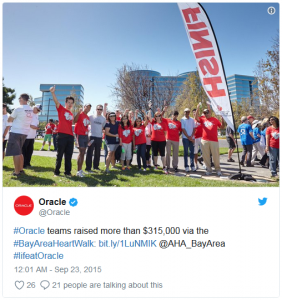Based on research from Statista 2018, it’s estimated that by 2021 there will be 3.02 billion social media users – that’s 40 percent of the world’s population. With this many users online, it’d be wise for companies to take their social sites more seriously as a branding tool.
In this blog post, we‘ll discuss the importance of using social media as a way to interact with your customers, how to increase your brand awareness through empathy, and build your company persona online.
Social media is one of the most efficient ways to reach a large audience, due to the sheer volume of people who use it. Based on the graph above, you can see the massive growth of social media use over the last decade.
Companies have a direct influence on their customers through social media – whether positive or negative – and they have the ability to engage in a dialogue on those platforms. And with functions like “sharing,“ “retweeting,” “commenting,” etc., that dialogue can go viral quite quickly and impact the way prospects and customers view the brand.
What Does it Take to Retain Customers?
Aside from customer interactions and news-sharing, what else can social media marketing bring to your company’s marketing goals? Let’s explore these five key ideas.
1. Increase website traffic
2. Elevate brand awareness
3. Create a brand identity
4. Learn from interactions with your audience
5. Turn traffic into conversions
Building empathy online
Connecting on a human level can be an effective way to create good will for your brand. Users who have a relatable – even humorous – online experience with a brand will likely relate to the brand positively. Just make sure to match the message appropriately to the company’s audience. The below Twitter exchange is a good example of adjusting the humor to the situation:
Make note of situations that are common to everyone, or reference current trending topics. The following example attracted a substantial audience with an effective pop culture reference:
“People buy from people” is certainly an oft-used phrase in the sales arena, but it holds true. Adding a persona behind your brand will allow customers to better relate to it. Photos of daily work life or from company events can be the entry point to gain trust from your customers.
Authenticity is also in high demand in social media circles. Social platforms enable a company to create an illusion, and you can select which types of content your audience should see. Build a more authentic presence by sharing the social aspects of your workplace. It doesn’t always have to be business-related. (Pro tip: Better avoid photos of your company’s Christmas party).
Here’s a great example from Oracle:
“Social media is no longer a marketing channel, it’s a customer experience channel,” says Broadsuite Media Group CEO Daniel Newman, in a Forbes article. It becomes clear that you have the chance to show the customer that they’re your priority. It’s important to have tools in place or a strategy to respond to your users’ interactions with your brand. If the customer gets an immediate reply and you’re able to respond appropriately, a happy customer will turn into a loyal customer. Therefore, make sure that the social media admins know at least the basics of customer service if you don’t have a dedicated customer service specialist in charge. Keep in mind the following steps for customer interactions on your social media platforms:
– Immediate responses
– Always follow up
– Personalize your response
– Learn from the feedback
Can the branding be turned into conversions?
So far we’ve discussed several strategies to polish the company’s image and elevate brand awareness. Though these are not direct revenue drivers since you cannot determine the revenue derived from a customer’s opinion of your company.
The methods above will help you gain a larger audience and more carefully tailor to your target audience. Depending on your industry, you can obviously try to generate direct conversions from your social media as well. The most direct way for companies with B2C customer goods available in an online shop would consist of referral links guiding to the website. But even companies who function as a third party or work with B2B customers who usually don’t use social media for any purchases (at least today) can contribute to the companies’ revenue through social media.
If you want to learn more about the ROI on social media platforms, we highly recommend one of our previous blog posts around this topic: Measuring ROI on Paid Social Ads.
After exploring these ideas, the strategy of your social media branding of course depends on your company’s overall strategy. Nevertheless we can’t think of a company where it would have a negative impact to show trustworthy people behind the company logo. Our audience also proved this to us via social media:
Keystone
Your social media audience doesn’t want to get bored with the same content every day. Social media is a business tool, but it is also a tool to engage and connect. A combination of informative content with a more human approach is the first step to establish your social media as a revenue driver for your company.
Jannis Jörger is an Online Marketing Coordinator at cleverbridge.
Learn more about Online Marketing and Social Media as a branding tool.




